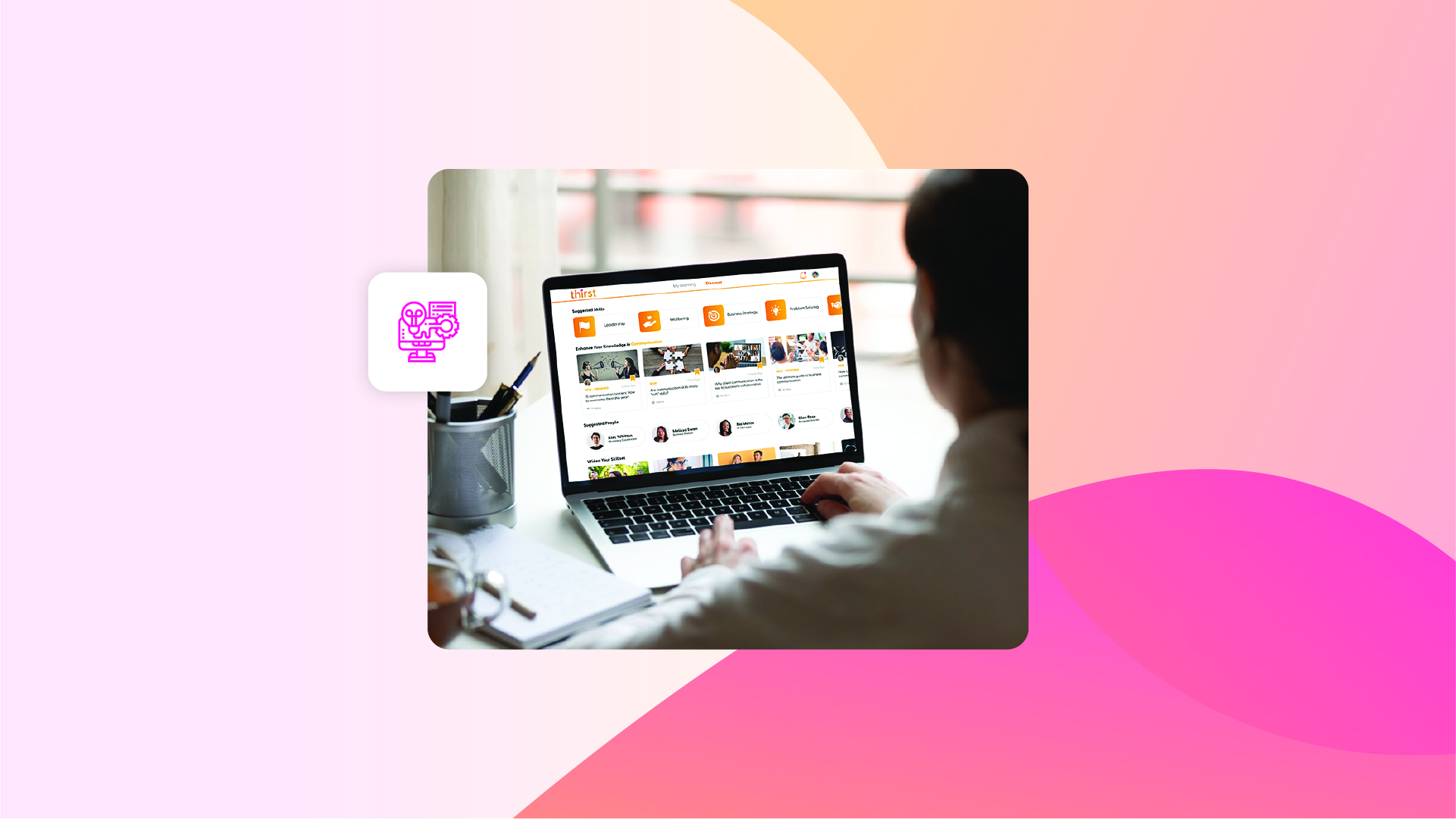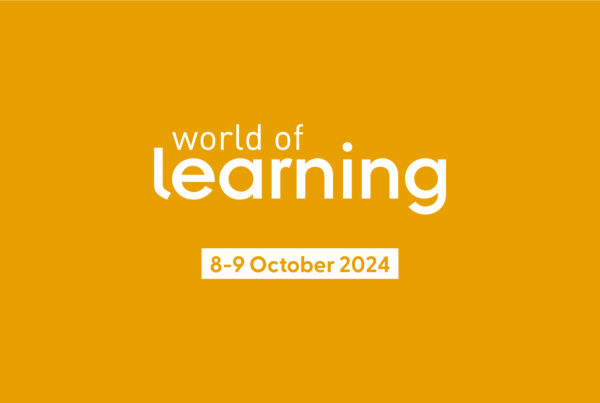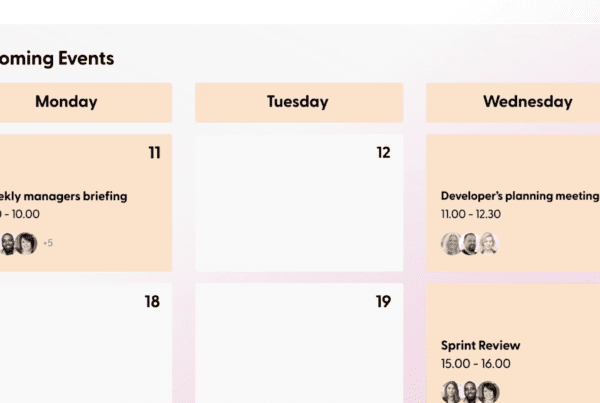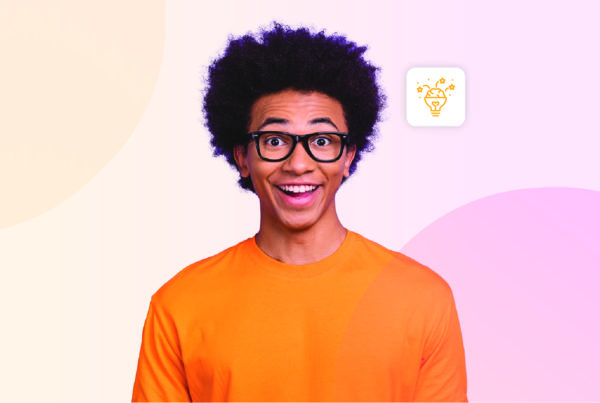Remember the days when learning involved two-inch thick textbooks, stuffy dust-ridden classrooms and the droning of teacher’s voices?
Those feelings of trepidation at the prospect of learning key historical facts, significant dates, source material and case studies just to gain a rounded historical education? 😟 🤔
L&D can be daunting.
No matter the circumstance or level of understanding. None of us are sponges.
Knowledge acquisition and retention would be so much easier if it were that simple. But that’s just not the case.
To become proficient, as an authority in any subject, takes effort. It’s a gradual process of learning and development. Boosting skillsets. One step at a time.
And a proven method to do this is to employ bite-sized learning. ⭐ 🙌 🥇
Below is our guide to bite-sized learning, including its definition, examples and core benefits of the learning process.
Interested in understanding more about what bite-sized learning means and how you can implement the process in your organisational workplace and development? Keep reading below.👇
What Is Bite-Sized Learning?
Picture how people learn in 2024.
For argument’s sake, let’s say that you want to learn how to fix a leaky kitchen faucet.
You don’t want to call a plumber, figuring that you’ll be able to do it yourself. But you don’t know the first thing about leaky faucets. Where would you even start?
Well, we’re quietly confident that the first thing you’ll do is to Google it.
Then look for the quickest way to learn what you need to do.
This isn’t spending hours reading a textbook. Its watching a short YouTube video. One that outlines exactly what you need to do. A stage-by-stage process. You complete one action and then move on to the next. And then the next. Until there’s no longer a leak. 💻 🖱️
This is bite-sized learning.
It’s breaking up the learning process into small chunks to make it easier to digest, promoting a targeted, specific learning experience.
One that focuses on learning gradually and scaling knowledge throughout the learning experience. And the benefits of employing this learning process are clear. Especially in the L&D sphere.
Examples of Bite-Sized Learning
A robust, effective learning strategy will leverage microlearning.
Not only is bite-sized learning efficient and flexible but it also caters to the contemporary psychology of learning; a time when people don’t want to, or even have the time to invest in memorising manuals and textbooks to understand a subject. 💡
Below are a few examples of bite-sized learning:
Microlearning Modules
How people learn has changed.
Today learner’s crave interaction, participation, and a hands-on learning experience.
Gamification, quizzes, simulations. Each bolsters engagement and is the opposite of mundane.
Make the experience fun and you’ll Improve knowledge retention.
Better still, interactive e-learning modules break down the knowledge and can be completed in just a few minutes. 🧑💼 🙋
Infographics or Quick Guides
A powerful bite-sized learning technique, infographics enable people to visualise data, information, processes or guidelines.
They’re a great way of absorbing complex, dense or a significant volume of information in a simple, easy-to-digest way.
Ideal for a range of learning styles, especially visual learners, infographics are much more favourable than having to absorb paragraph after paragraph of drab text. 📊
Podcasts or Audio Summaries
According to some statistics, up to 30% of people are auditory learners.
That’s 18 million people in the UK. 20% of people in the UK listen to podcasts on a weekly basis – That’s 13.6 million people!
What does this mean?
Podcasts offer tremendous scope for auditory learners to learn and develop.
More than that, podcasts can condense complex, expansive information into easy-to-understand bite-sized learning chunks. And depending on the length of the podcast, chunks, allowing people to scale their knowledge and skills the more they listen.
Indeed, whether you want to discover more about relevant industry trends, develop soft skills or learn all about essential leadership strategies, podcasts are a valuable bite-sized learning tool. 🎙️ 📣
How-to Guides
Using concise, how-to guides is a great way to learn and develop knowledge and skills, not only in a commercial environment, but also in all areas of your life.
Clear instructions are easy to follow. Negate confusion. Compel learners to follow linear learning progression. Make retention easier and much more.
Particularly useful when onboarding employees, introducing new software and updating processes and procedures, how-to guides often break complex and comprehensive information into an easily digestible, bite-sized format, speeding up the learning process. 🤗
Interactive Quizzes, Exercises and Polls
Integrate quizzes, exercises and polls into a learning and development process and learning will become interactive–and immediate.
The practical application of acquired knowledge combined with the short digestible way of applying what has been learned promotes retention, whilst allowing for future adjustments and targeted follow-up training.
Virtual Workshops or Webinars
Host brief virtual workshops or webinars focused on specific skills or tools that L&D professionals can apply to their roles.
These sessions can include hands-on activities, case studies or live demonstrations to encourage active participation.
Dynamic Content
In our digital world, we’re exposed to dynamic content every day.
For instance, algorithms will adapt to user’s intentions and behaviours. Dynamic content, or content that automatically evolves, changes, and adapts to preferences and intentions is vital to promoting a user experience that’ll turn prospects into advocates.
Just look at Amazon.
Let’s say you browse and buy books, men’s fragrances, video games, electronics, or anything really, Amazon will adapt its recommendations based on your buying and browsing history. It automatically updates. – This is dynamic content.
Now, let’s examine this again in the L&D space.
Dynamic content can be used to notify you when it’s time to upskill colleagues, remind you of a new legislation that requires further L&D and much more. Better still, visual elements of dynamic content, like images, short clips, and even GIFs can be emphasised to increase engagement and influence decision-making. 📲
Learning Nuggets on Social Media
Share bite-sized learning nuggets, such as tips or best practices on social media platforms like Twitter and LinkedIn.
Concise posts can provide quick, actionable insights that L&D professionals can use to further enhance their expertise. #️ 👍
Peer Learning Circles
Encourage peer learning circles where L&D professionals can collaborate in small groups and discuss challenges, share experiences and exchange knowledge about various subjects.
These learning circles encourage collaboration and continuous community learning. 🧔 💬
Automated Email Campaigns
Deliver bite-sized lessons or share resources over days or weeks with automated email campaigns.
This approach allows L&D professionals to engage with the content at their own pace whilst benefitting from regular prompts to help them stay on track. 📧
How to Get Started with Bite-Sized Learning
Every organisation needs to cultivate core learning opportunities and the skills that can be acquired with each.
Why?
Building a strong knowledge base, leveraging all skills acquired and scaling these skills to evolve learning, understanding and value is the surest route to driving productivity, knowledge retention and application, employee happiness and overall operational finesse.
However, as with many things, taking the first step is often the most difficult.
Thankfully, the challenges of all learning processes, including bite-sized learning, can be mitigated providing that start off on the right foot and employ the right learning processes.
Interested in learning how to get started with bite-sized learning? We’ve listed the actions below. 👇
✅ Identify Learning Objectives
Before doing anything else, you must first identify what you want to achieve.
This could include addressing key gaps in knowledge, identifying key actions to improve communication, improve colleague efficiency, and more. Focus on learning objectives that improve both individual, team and organisation-wide performance.
✅ Assess Audience Needs
Take the time to understand the learning styles and preferences of inter-departmental learners.
Remember learning styles differ. People learn at different paces.
Assess employee needs by conducting focus groups or interviewing people to gather feedback and insights to ascertain their preferred learning formats, pain points, and the types of learning they will respond to.
✅ Choose Bite-Sized Format
Once you have identified learning objectives and assessed audience needs, the next stage is to choose what type of bite-sized format is best-suited to your learners.
This could include microlearning modules, infographics, podcasts, even short videos, quizzes or interactive content. Tailor the bite-sized learning to the nature and needs of organisational learners.
✅ Curate Content
Don’t neglect to gather or develop content best suited to bite-sized learning.
This could include sharing existing training materials, curated resources from reputable sources, or learning from subject matter experts within the organisation.
Don’t forget that bite-sized learning should be concise, focused and aligned with learning objectives.
✅ Leverage Technology
If you want to optimise learning, including bite-sized learning, you will need to leverage digital solutions.
This includes LMS platforms, such as Thirst, mobile apps or social learning platforms. Choose the tools that promote flexibility, accessibility and interactivity. This will effectively engage learners.
✅ Pilot Test Initiatives
Assess the effectiveness of any bite-sized learning by operating pilot test initiatives.
Create a focus group with a small number of users within a specific department or team.
Monitor their engagement metrics and evaluate learning outcomes to identify areas of improvement and scalability. Gather feedback. Promote positive feedback outcomes within the wider teams.
✅ Promote Awareness and Engagement
Use internal communications such as email, newsletters, staff meetings or intranet announcements to promote bite-sized learning and engagement, encourage participation and provide incentives or rewards for engagement.
✅ Monitor and Evaluate Performance
Optimise bite-sized learning performance and impact by using relevant metrics and key performance indicators (KPIs), such as completion rates, learner satisfaction scores, knowledge retention, and application of learning in the workplace.
Data-driven insights are useful to help refine content, delivery methods and engagement strategies over time.
✅ Refine and iterate
Gather feedback and insights from the pilot testing and monitoring to improve the effectiveness and scalability of all bite-sized learning.
Expand learning reach across all organisations with honed, scalable initiatives to reach and influence a wider audience.
The Benefits of Bite-Sized Learning
Now, we’ve already alluded to some of the benefits of bite-sized learning throughout this blog post, but in an effort to help you decide if bite-sized learning is right for your organisation, below are the key benefits you’ll reap when you implement the philosophy. ⛔ 📚
A Flexible Learning Solution
The way people learn has evolved. So too must learning strategies.
In today’s modern working world, people don’t tend to want to attend seminar after seminar, lecture after lecture, task after task just to acquire a new skill.
Now, of course, hands-on learning is still beneficial.
But, in reality, it shouldn’t be considered the primary learning mechanism.
In 2024, learners prefer to learn at their own pace.
They prefer a learning method that doesn’t intrude on any existing professional commitments. Enter flexible learning. Acquiring information in chunks.
But there’s so much more to it than that.
Bite-sized learning benefits auditory learners.
Remember, most of us only have so much space in our brains. We can be easily overwhelmed when tasked with memorising new information.
Do you think that doctors, solicitors, teachers, digital marketers, and L&D professionals are just handed a 100-page pdf, read it once, and the information is then retained forever?
It would be grand if learning were that simple, but alas, it isn’t!
Instead, most of us acquire new skills by building foundational knowledge and then scaling that knowledge in bite-sized chunks. This aids retention. Bolsters understanding. Trains our brains to learn more. Makes scaling knowledge much easier. 🙂 🏆
Higher Retention Rates
Breaking up learning into manageable, digestible chunks will reduce the strain of having to absorb a mountain of information in a brief period of time.
This results in less stress and pressure. Learning can be scaled from solid foundations, improving knowledge processing and retention. 😉
Improved Engagement
Let’s face it, the average attention span in our digital world is miniscule.
For many, just staying alert for hours, heck even minutes, can be a challenge.
Realistically, after a few minutes, most of our minds have started wandering. This is why microlearning has become so intrinsic to today’s modern world.
One way to combat this is to scale eLearning solutions.
Why?
They encourage engagement!
Performing a task can be far more effective than listening to someone else for hours at a time.
Learners can become bored. Switch off. Ultimately, acquire less, even any relevant knowledge.
Yet there is a solution. Studies have shown that learners’ interest in and understanding of subjects is improved greatly when information is presented in engaging, bite-sized chunks.
Better still, this methodology improves retention which leads to stronger knowledge application. 💡
Increased Productivity
When acquiring new knowledge, learners can feel overwhelmed.
Especially when they’re at the start line, waiting for the pistol to sound to launch into a new learning journey. This feeling of being overwhelmed can hamper confidence, resulting in a slower learning process.
Bite-sized learning mitigates the feeling of being overwhelmed.
Oftentimes, exposing learners to smaller nuggets of information that can be easily acquired, allowing them to build confidence and be more enthusiastic throughout the learning process.
Think about how people acquire, let’s say, coding knowledge.
They learn the straightforward basic stuff, such as data structures of Java or Python, strings and dictionaries, before moving on to more complicated actions.
This foundational knowledge helps people to achieve their goals by scaling what they already know whilst increasing productivity. 📈
It Benefits Modern Learners
Call it evolution. A reaction to the modern digital world. The TikTok generation.
There’s no denying that our brains have evolved. So how we learn must evolve too.
Breaking down learning into bite-sized chunks both caters to different learning styles and makes information easier to acquire.
Then there’s the dreaded influence of time. Something that, although it can be considered to be abundant, most of us still feel that we’re short on.
Mobile, flexible, and more notably, bite-sized learning helps learners to circumvent the challenges presented by a lack of time.
Remember too that today’s learners want to learn anywhere at any time. They don’t want to feel constrained to solely learning during a one-hour lecture in a stuffy auditorium a couple of times a week.
eLearning courses and platforms, like Thirst, give learners the ideal opportunity to learn how they want.
Better still, knowledge can be broken down into small, digestible chunks for easier understanding and retention.
If you want to educate modern learners, employ bite-sized learning. Try it. You’ll notice a stark difference! 📱 🎓
The Definition, Examples, And Benefits of Bite-Sized Learning Are Clear
There are several learning philosophies. Each benefitting diverse types of people.
However, what’s clear is that if you want to optimise your organisation L&D you need to leverage the philosophy that will appeal to a broad range of learners.
This is where bite-sized learning shines. 🌟
Whether the bulk of your colleagues are auditory learners, kinaesthetic learners, or visual learners, breaking information into digestible chunks for bite-sized learning will promote comprehensive learning.
Implement bite-sized learning into your L&D strategy and you’ll build a strong, capable workforce, one that can easily acquire and implement new knowledge, meaning you’ll be able to strategically scale operations whilst enjoying a stellar reputation.
The more you know, the more equipped you’ll be to excel.
For more e-learning insights, resources and information, discover the Thirst blog.
You may also enjoy:
What is Cognitive Learning Theory? | 10 Ways to Overcome the Forgetting Curve | The Ultimate Guide to Sharing Best Practices






